As the world becomes more conscious of environmental issues, the construction industry has embraced sustainable practices that reduce carbon footprints, conserve natural resources, and create healthier spaces. One of the most widely recognized frameworks for green construction is LEED (Leadership in Energy and Environmental Design). LEED offers a comprehensive approach to designing, building, and maintaining sustainable buildings, encouraging construction companies to adopt eco-friendly methods.
In this article, we’ll explore what LEED certification is, how it works, and why green construction is essential for the future of the industry.
What Is LEED Certification?
LEED is an internationally recognized certification system developed by the U.S. Green Building Council (USGBC). It provides a set of standards for energy efficiency, water conservation, indoor environmental quality, and the use of sustainable materials in construction projects. Buildings earn LEED certification by accumulating points across several categories that promote sustainability. The more points a project earns, the higher the certification level it can achieve.
There are four levels of LEED certification:
- Certified: 40-49 points
- Silver: 50-59 points
- Gold: 60-79 points
- Platinum: 80 points and above
LEED certification is available for various types of buildings, including residential, commercial, and institutional projects. It applies to both new constructions and existing buildings that undergo renovations or retrofits.
Categories for LEED Certification
LEED evaluates projects across several categories, each focusing on a different aspect of sustainable construction. To achieve certification, projects must meet minimum requirements in several key areas:
Sustainable Sites:
This category evaluates how the project impacts the surrounding environment. It encourages choosing locations that minimize disruption to the ecosystem, promoting smart urban growth, and reducing transportation-related emissions. Strategies like preserving green spaces, managing stormwater, and minimizing light pollution earn points.
Water Efficiency:
Conserving water is a critical part of green construction. This category rewards projects that implement water-efficient systems, such as low-flow fixtures, efficient irrigation, and rainwater harvesting. Projects also earn points for landscaping designs that reduce water consumption and promote sustainable water management practices.
Energy and Atmosphere:
Energy efficiency is central to the LEED rating system. This category focuses on reducing energy use, improving building performance, and incorporating renewable energy sources like solar or wind power. Energy-efficient HVAC systems, lighting, and appliances also contribute to earning points. Additionally, projects are encouraged to reduce greenhouse gas emissions and enhance energy conservation.
Materials and Resources:
Sustainable material use is key to green construction. This category rewards projects that source eco-friendly materials, minimize waste, and use recycled or renewable resources. Points are awarded for using locally sourced materials, reducing construction waste, and incorporating life-cycle analysis into material selection.
Indoor Environmental Quality:
This category promotes healthy indoor environments by improving air quality, natural light, and ventilation. Projects earn points by using non-toxic materials, installing air filtration systems, and maximizing daylight exposure. Enhanced acoustics and comfortable indoor spaces also contribute to creating healthier environments for occupants.
Innovation and Design:
Projects can earn additional points for innovative sustainable practices that go beyond the standard LEED criteria. This includes using cutting-edge technologies, unique design features, or creative solutions that improve overall building performance. Bonus points are available for projects that incorporate new strategies for sustainability.
Location and Transportation:
This category rewards projects that reduce the environmental impact of transportation by choosing locations near public transit, reducing the need for private cars, and encouraging alternative transportation methods. Projects that include bike storage, electric vehicle charging stations, or pedestrian-friendly designs earn points.
Benefits of LEED Certification
Achieving LEED certification offers a range of benefits for developers, building owners, and occupants. These benefits go beyond the environmental advantages and extend to financial savings, improved health, and a stronger market presence.
Cost Savings:
One of the most significant advantages of green construction is reduced operating costs. LEED-certified buildings are designed to consume less energy and water, which leads to lower utility bills. Energy-efficient lighting, HVAC systems, and appliances can drastically cut electricity costs, while water-saving fixtures help conserve resources.
Higher Property Value:
LEED-certified buildings tend to have higher property values compared to non-certified buildings. They are more attractive to buyers, renters, and investors who prioritize sustainability. Green buildings are often associated with reduced operational costs, healthier environments, and longer-lasting materials, which make them valuable assets in the market.
Healthier Indoor Environments:
LEED-certified buildings focus on improving indoor air quality, maximizing natural light, and using non-toxic materials. These features lead to healthier spaces that enhance occupant well-being. Better ventilation and reduced exposure to harmful chemicals lower the risk of respiratory issues and improve overall comfort.
Environmental Impact Reduction:
Green construction practices significantly reduce a building’s environmental footprint. LEED projects prioritize energy efficiency, water conservation, and waste reduction, contributing to less pollution, fewer carbon emissions, and a more sustainable use of natural resources. By choosing eco-friendly materials and renewable energy sources, these projects help combat climate change.
Positive Brand Image:
For companies and developers, LEED certification enhances their reputation as leaders in sustainability. Consumers and tenants are increasingly drawn to brands and buildings that demonstrate a commitment to environmental responsibility. By showcasing LEED certification, businesses can differentiate themselves in the marketplace and appeal to eco-conscious clients and investors.
The Future of Green Construction
The construction industry plays a significant role in global carbon emissions and resource consumption. As environmental concerns continue to rise, green construction methods like LEED are no longer optional—they are becoming standard practice. Governments, corporations, and individuals recognize the importance of sustainable building practices in combating climate change and preserving the planet for future generations.
Incentives for Green Construction:
Many governments and local authorities offer financial incentives for green construction, including tax credits, grants, and rebates. These incentives encourage developers to pursue LEED certification and invest in sustainable technologies, making eco-friendly buildings more financially viable.
Advancements in Sustainable Technology:
The green construction industry continues to innovate, with new technologies and materials constantly emerging. From smart energy systems to advanced insulation, sustainable building materials are improving building performance and reducing costs. As technology evolves, green construction becomes more accessible and affordable.
Meeting Regulatory Requirements:
Many regions have begun implementing stricter environmental regulations for new construction projects. In some areas, LEED certification or similar standards may become mandatory to comply with these regulations. This shift underscores the importance of adopting sustainable practices now to stay ahead of future requirements.
Conclusion
LEED certification is more than just a badge of environmental responsibility; it’s a comprehensive framework that drives green construction practices forward. By focusing on energy efficiency, water conservation, material sustainability, and occupant well-being, LEED-certified buildings help reduce environmental impact while offering significant financial and health benefits.
As the construction industry embraces green building practices, LEED and other sustainable standards are helping shape a more eco-friendly future. Whether you’re a developer, contractor, or homeowner, investing in LEED certification and green construction pays off for both the environment and your bottom line.


